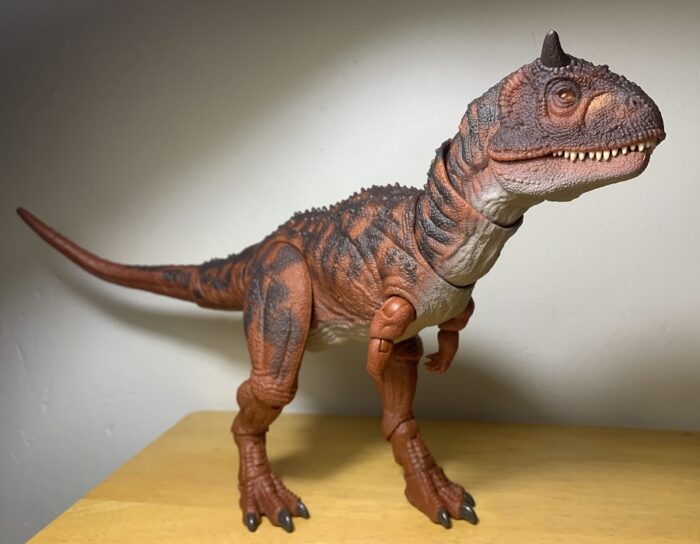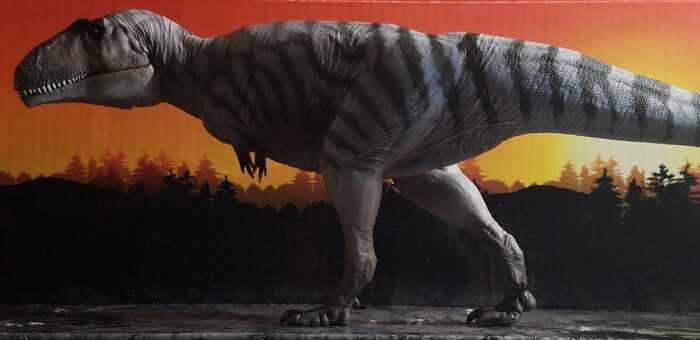Well, it turns out that Mojo Fun does technically have some brand new prehistoric figures in store for 2024. Like those from CollectA and Papo, the miniatures in this tube are all based on preexisting larger figures, and older ones at that. You’ve got Ankylosaurus, Brachiosaurus, Mandschurosaurus, Parasaurolophus, Pteranodon, Smilodon, Spinosaurus, Stegosaurus, Triceratops, Tyrannosaurus rex, Velociraptor, and the woolly mammoth.
News: Upcoming releases from Mattel (New for 2024)(Pt. 9)

Take a look at two more interesting 2024 Mattel Jurassic World Danger Pack toys. First is Craterosaurus, an Early Cretaceous stegosaur from England known from just a partial vertebra (which clearly didn’t deter Mattel).
And the other is Kileskus, a Middle Jurassic tyrannosauroid from Russia.
Review: Carnotaurus (Jurassic World: Fallen Kingdom, Hammond Collection by Mattel)

Mattel loves Carnotaurus. Our friends at DinoToyCollector.com have catalogued 22 Carnotaurus figures for Mattel’s Jurassic World line, but that number includes the minis, Snap Squad, and similar toys too, and their various repaints and repackages. Either way, the company has still produced an impressive array of Carnotaurus toys.
Review: Dacentrurus (Haolonggood)

Happy Hen Toys has generously provided me with my first ever Haolonggood review subject: Dacentrurus. The very first stegosaur to be formally described and named in 1875 (the original name was Omosaurus until someone realized in 1902 that it was already taken), Dacentrurus is estimated to have been up to nine metres in length and five metric tons in weight, making it presently the second largest known member of its family after Stegosaurus.
News: Upcoming releases from Mojo Fun (New for 2024)
News: Upcoming releases from Haolonggood (New for 2024)
Review: Carcharodontosaurus (Blue Version)(GR Toys by Haolonggood)

Review and images by Pliosaurking, edited by Suspsy
Hello, everyone and welcome to another review, in which I’ll be reviewing the Gr Toys x Halonggood Blue Carcharodontosaurus! Carcharodontosaurus was a massive carcharodontosaurid that lived in northern Africa during the Cenomanian stage of the Cretaceous period about 90 million years ago.
Review: Mosasaurus (Deluxe Prehistoric Collection by CollectA)
News: Upcoming releases from Haolonggood (New for 2023)(Pt. 13)
Review: Meraxes (Mungo) (Prehistoric Animal Models by PNSO)
Review: Piatnitzkysaurus (Jurassic World Dino Trackers Danger Pack)

We owe a lot of our pop dinosaur knowledge to books such as “The Humongous Book of Dinosaurs” by David Norman (et al.), written in the very late 1980’s and early 90’s, published by various publishers in many formats, like collectible magazines, all which often included a comprehensive list of dinosaurs from a-z, and from all over the world.










